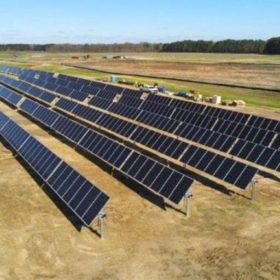Nebraska is not the first state that many think of when they think of solar. The state is one of only seven that GTM Research and SEIA don’t track in quarterly reports on the U.S. solar market, and Nebraska has no statewide renewable energy mandate or goal.
However, Nebraska is on its way to getting its third community solar project to date through the Omaha Public Power District (OPPD). OPPD has presented a rate rider to its board for approval and has laid out basic details of what its community solar program will look like.
This includes a pay-as-you-go option, with the only up-front cost being a deposit that will be refunded if customers stay in through the life of the program. Customers will be eligible to offset 10-50% of their electricity usage with solar from the installation, and together with its wind procurement, customers could elect for a 100% renewable energy option that includes community solar.
It is notable that just because Nebraska has had limited solar deployed to date does not mean that has not put online any renewable energy – far from it. The Great Plains which stretch from Texas across the state into Canada have some of the richest wind resources in North America, and OPPD reports that wind turbines currently supply around 30% of the power it delivers to its customers. The utility further expects this to increase to 50% in the next few years.
Unfortunately, OPPD is estimating that the program would entail a 3-17% increase in the monthly bills of participating customers. The program would add the cost of the solar PPA plus interconnection to its standard retail rate, and then subtract the cost of what OPPD estimates the value of that electricity would be in the Southwest Power Pool (SPP) grid.
The addition of the PPA cost to the retail rate – instead of only transmission and distribution costs – is not the most favorable way to calculate a community solar rate for customers. Additionally working against the customer is generally low cost of wholesale electricity in the SPP, which is driven down by plentiful, low-cost wind that is made even cheaper by the federal Production Tax Credit.
Right now many details of the program and the project(s) that will supply it are still being worked out, including the size of the project and where it would be located. However OPPD is already in contact with developers who have requested sites in Bellevue, Fort Calhoun and Gretna.
This content is protected by copyright and may not be reused. If you want to cooperate with us and would like to reuse some of our content, please contact: editors@pv-magazine.com.









By submitting this form you agree to pv magazine using your data for the purposes of publishing your comment.
Your personal data will only be disclosed or otherwise transmitted to third parties for the purposes of spam filtering or if this is necessary for technical maintenance of the website. Any other transfer to third parties will not take place unless this is justified on the basis of applicable data protection regulations or if pv magazine is legally obliged to do so.
You may revoke this consent at any time with effect for the future, in which case your personal data will be deleted immediately. Otherwise, your data will be deleted if pv magazine has processed your request or the purpose of data storage is fulfilled.
Further information on data privacy can be found in our Data Protection Policy.